The Missions Team and The Local Church
The local Alliance church has a unique responsibility to proclaim Jesus Christ to the people in her own community, evangelizing and discipling them, and mobilizing them to reach beyond themselves to the unreached and responsive peoples outside of that local community and planting new churches worldwide. This sentiment is conveyed in the Missions Statement of the C&MA:
Our mission is to…[be] evangelizing and discipling persons throughout the United States and around the world, incorporating them into Christ-Centered, community-focused congregations, and mobilizing them in a missionary effort designed to plant Great Commission churches among both unreached and responsive peoples worldwide…
The healthy local church begins in her own “Jerusalem”, where Jesus Christ is proclaimed and modeled to the surrounding community. Believers are discipled and a responsibility is shared to reach not only people like themselves in their Jerusalem, but people unlike themselves (socio-economical, ethnic & immigrant, etc.) nearby. The healthy church also shares a responsibility to reach beyond herself, to her Judea & Samaria…and everywhere in the world! This is an Acts 1:8 church in action, one that sees herself as a channel of blessing both to the immediate community and beyond her own cultural environment. This is a church that shares an urgency around the mission to bring Jesus Christ to the people in dark places nearby and far away. In this way, the enterprise known as worldwide missions is really the local church living out her divine purpose fully. It is where disciples are formed, called-out ones become sent-ones, where reaching the world is an extension of local church ministry.
Without evangelism at home, missions abroad gradually loses its meaning. - Samuel Stoesz
Truly, it is the responsibility of each person in the local church to ask themselves, “Are we blind to people, or under-valuing people, like us and/or unlike us nearby?” “Are we participating in reaching people in under-reached or difficult places?” While every disciple needs to ask themselves these questions, church leaders share a special responsibility to wrestle with them. “Ministers and elders have the central responsibility for ensuring that missions is a principle passion of their congregations and not a peripheral program for the super saints.” (Michael Griffiths) Overall, church leaders must answer the question, ”What does it take to capture the hearts of God’s people and propel them into meaningful and effective participation in missions?” The role of the lead pastor and staff is critical to instill Great Commission engagement and missions DNA.
In this venture, obviously the pastor and key leaders are principle players for the mobilization of the church. Overall preaching, teaching and discipleship unites and energizes the congregation to be “on mission”, where spiritual gifting and vocational calling are valued and identified. Pastors, elders, staff, and influencers within the congregation give value and credibility to reaching the lost…here, there and everywhere!
A survey on mission attrition showed that one of the main causes of missionaries returning prematurely from the field was because they were not rooted and grounded in a local church. - Patrick Johnstone
A missions mobilizer walks alongside the pastor as a person who is informed and passionate about missions…especially Alliance missions and Alliance International Workers (IWs). The Missions Mobilizer can stay informed via the Alliance website, Global Link Office, and other resources (videos, AWF, books of theology of missions, missionary biographies and stories, etc.) to keep the congregation aware of the role, task and people involved in global advance. This includes financial participation in the Great Commission Fund (and how it works) and individual IW’s funding, along with prayer requests. The Missions Mobilizer can also help the local church live out her values locally, and globally, through intentional partnerships (ex: locally with ENVISION, World Vision or refugee groups or international students, globally with IWs reaching similar people groups in countries overseas).
The reality for many Alliance churches is that the missions mobilizer is the pastor for various reasons. Sometimes, it’s just easier to “do it myself”. Sometimes, logistically in small fellowships, there simply aren’t people available. Sometimes, it’s because the role of missions mobilizer/team is undervalued.
The missions mobilizer’s role is enhanced by a local church missions team comprised of people similarly engaged and passionate about Alliance missions and IWs. Ideally, the task of the missions team is to lift up Alliance missions on a regular basis and as a normal part of the church’s life. The team also assists the church staff (and local leadership team) in understanding the overall priority of the Great Commission to make disciples of all nations. This team can also supplement the missions education being preached from the platform, or taught through in the discipleship groups. In this way, they assist in keeping the church “on mission.”
For the local church missions team getting the “right people on the bus” is important. The “ideal” missions team varies. It could be comprised of “leaders-in-training” — missions leaders in development. In this way, the team member is actually serving as a mentor or developer of new members, discipling new mobilizers and enhancing the strength and depth of the church! They build on top of the foundation established by the pastor and church leaders, and bring the information, needs and realities “home” to the congregation through information, prayer engagement, financial giving updates, partnership opportunities and through missions events with “live missionaries.” All the while, developing new leaders with a passion for missions and reaching the people who do not yet know the abundant life in Jesus Christ.
In some contexts, the “ideal” missions team could be comprised of representatives — people representing ministries or demographics within the church. Someone from the youth group with a budding interest in missions represents his/her age group and ministries. A gifted prayer warrior solicits requests from TCKs and IWs who are connected to the church and enlists other people to pray. Someone with overseas experience can bring a high cultural IQ to the team, which is helpful in understanding ministry challenges, culture shock and role deprivation. Parents of IWs and/or transitioned IWs bring specific experience and represent their age group. Entrepreneurs bring ideas and affinity with our Marketplace Ministries workers…etc.
Ultimately, the local church missions team enhances missions education among the congregation, increases missions awareness, highlights missions promotion, champions meaningful prayer, spotlights missions stewardship (giving goals, etc.) and makes planning intentional. Planning includes more than a few days with an IW annually…it involves looking ahead to goals and objectives for the next 5 years. It can include future short-term missions trips, exploring partnerships with teams or fields, and even walking alongside TCKs whose parents might have a special relationship with the church. The missions team could even interface with church leadership in the development of an Alliance Licensed Ministry Experience (ALME) to provide ministry opportunities for upcoming missionary candidates.
A useful tool for your missions team is the C&MA Missions Engagement Assessment Tool, or the Missions Assessment Profile (ACMC). This assessment helps us see our level of mission engagement clearly and initiates honest conversations about how we can strengthen our levels of engagement with Alliance missions and Alliance DNA. It’s not a “pass/fail” assessment, but one that stimulates discussion, triggers ideas and promotes improved missions mobilization on a larger scale. Even better…review the assessment annually!
As the church leaders, missions mobilizer and missions team work together, they can also “re-balance” their priorities as they seek to fulfill the purpose of the church. Some questions to consider are*:
Do we need more mission emphasis or is missions too heavily emphasized compared to other needs?
Do we need more prayer to stay “on mission” or more activity in missions and outreach?
Do we need a more evangelistic emphasis or a more humanitarian emphasis?
Do we need to focus more on short-term (quick results) mission trips/ministries or more long-term (long-term tasks) ministries?
Are we losing the commitment of our people by focusing on strategic needs that are beyond their range of understanding and involvement, or are we neglecting critical and strategic needs because we limit ourselves to the interests of our people?
How does our church need to rebalance to maximize our effectiveness in the urgent global rescue operation?
*David Mays, The Mission Leadership Team
A missions mobilizer, and the missions team, play an important part in local ministry. The church has a unique place in her local community to proclaim Jesus Christ, exalt Him as Savior, Sanctifier, Healer and Coming King…within her own context, community and beyond! Through meaningful partnership with IWs, the local church’s evangelistic and discipleship reach extends to the least reached people around the world. Keeping the church engaged in missions, together we share and live out, an urgency to bring light to people in dark places!
Did this article stimulate some questions for you?
…generate some new ideas?
…confirm areas you’re already implementing?
Want to talk? Your feedback & input is always welcome. Feel free to contact me (Dave) directly or reach out to one of your peers on the NCD Missions Team.
Dave Manske
Missions Mobilizer


